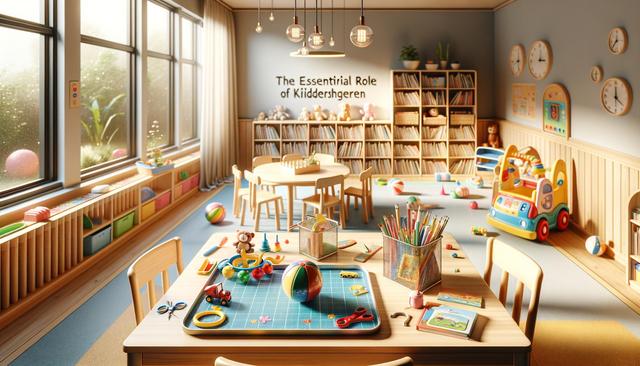Health and Hygiene in Early Childhood Environments
Maintaining high standards of cleanliness in kindergartens is crucial for safeguarding children’s health. Young children have developing immune systems, making them more susceptible to infections and illnesses. In group settings like kindergartens where shared toys, tables, and bathrooms are common, germs can spread quickly if cleaning protocols are not consistently followed. Regular cleaning reduces the presence of harmful bacteria, viruses, and allergens in these spaces. This not only helps prevent the spread of common colds and flu but also minimizes more serious health threats like gastrointestinal infections.
A hygienic environment supports the physical and emotional development of children. When children are healthy, they can participate more fully in activities, engage with peers, and develop stronger social and cognitive skills. Clean classrooms and play areas also help reduce absenteeism among both children and staff, leading to a more stable learning environment. Essential cleaning activities include:
- Daily disinfection of high-touch surfaces like doorknobs, light switches, and toys
- Regular cleaning of floors, restrooms, and eating areas
- Routine laundering of linens and soft toys
By promoting a clean and hygienic environment, kindergartens can significantly contribute to healthier early childhood development.
Creating a Safe Space for Learning and Play
Children in kindergarten spend a major part of their day playing, exploring, and learning through physical interaction with their surroundings. Safety and cleanliness go hand-in-hand in these formative settings. Dirty or cluttered environments increase the risk of accidents, such as slipping on spilled liquids or tripping over toys. Clean and organized spaces, on the other hand, support safer movement and foster a sense of order and security among young learners.
When children feel safe in their environment, they are more likely to express themselves freely and engage in active learning. A well-maintained setting also supports the efforts of teachers who rely on clean and functional spaces to implement their educational plans effectively. Key safety-related cleaning practices include:
- Ensuring non-toxic cleaning products are used and stored safely
- Keeping floor surfaces dry and free from obstacles
- Sanitizing playground equipment and ensuring it is free from debris
Creating a clean and safe learning environment demonstrates a commitment to the well-being of children and reassures parents that their children are in good hands.
Supporting Staff Efficiency and Morale
Kindergarten staff benefit significantly from a clean and orderly environment. Teachers and caregivers are able to focus more effectively on their roles when they are not burdened by cleaning tasks or distracted by clutter. A clean environment minimizes stress and promotes a positive atmosphere, which in turn helps staff maintain a nurturing and attentive approach to childcare.
Cleanliness also contributes to staff morale. Working in a tidy space can boost motivation and job satisfaction, leading to lower turnover rates and better continuity in care. In settings where cleanliness is prioritized, staff are more likely to feel valued and equipped to perform their duties efficiently. Some ways to support staff through effective cleaning include:
- Providing adequate cleaning supplies and training on hygiene protocols
- Establishing clear cleaning schedules and responsibilities
- Involving professional cleaning services for deep-cleaning tasks
By investing in a clean environment, kindergartens not only safeguard the health of children but also enhance the effectiveness and well-being of their staff.
Building Trust with Parents and the Community
Cleanliness directly affects the perception of a kindergarten by parents and the surrounding community. When parents drop off their children, they expect to see a clean, organized, and welcoming space. A visibly clean environment helps build trust and confidence in the institution’s ability to care for their children. It signals attention to detail, professionalism, and a strong commitment to child welfare.
In competitive early education markets, a kindergarten’s reputation can hinge on parents’ first impressions. Clean classrooms, hygienic restrooms, and tidy play areas contribute to a positive image, encouraging word-of-mouth recommendations and increased enrollment. Additionally, institutions that prioritize cleanliness are better positioned to comply with health and safety regulations, which can impact their licensing and accreditation status. Key elements that influence parental trust include:
- Transparency about cleaning policies and schedules
- Visible cleanliness during tours or visits
- Responsive communication regarding hygiene concerns
By maintaining high cleanliness standards, kindergartens not only protect children but also foster stronger relationships with families and the broader community.
Implementing Effective Cleaning Strategies
Establishing consistent and thorough cleaning practices requires planning, resources, and collaboration. Kindergartens that implement structured cleaning routines benefit from smoother daily operations and improved overall outcomes. Effective cleaning strategies are not one-size-fits-all; they must be tailored to the specific needs of the facility, taking into account the number of children, the layout of the space, and the types of activities conducted daily.
Successful cleaning programs often involve a combination of in-house staff and external professionals. Regular training ensures that all personnel understand hygiene standards and how to use cleaning products safely. Additionally, documentation and checklists can help ensure accountability and consistency. Some recommended strategies include:
- Creating a daily, weekly, and monthly cleaning schedule
- Using child-safe disinfectants and eco-friendly supplies
- Conducting regular inspections and audits
Investing in professional cleaning services for periodic deep-cleaning can also make a significant difference. These services often have access to specialized equipment and expertise that go beyond daily maintenance. Overall, implementing a structured and responsive cleaning plan lays the foundation for a successful and healthy kindergarten environment.




Leave a Reply